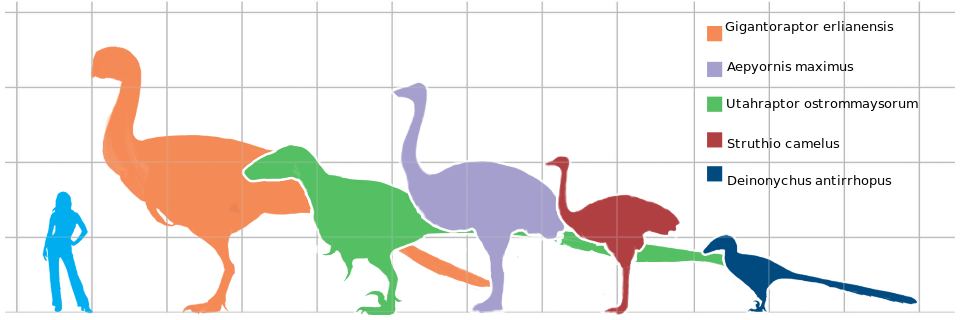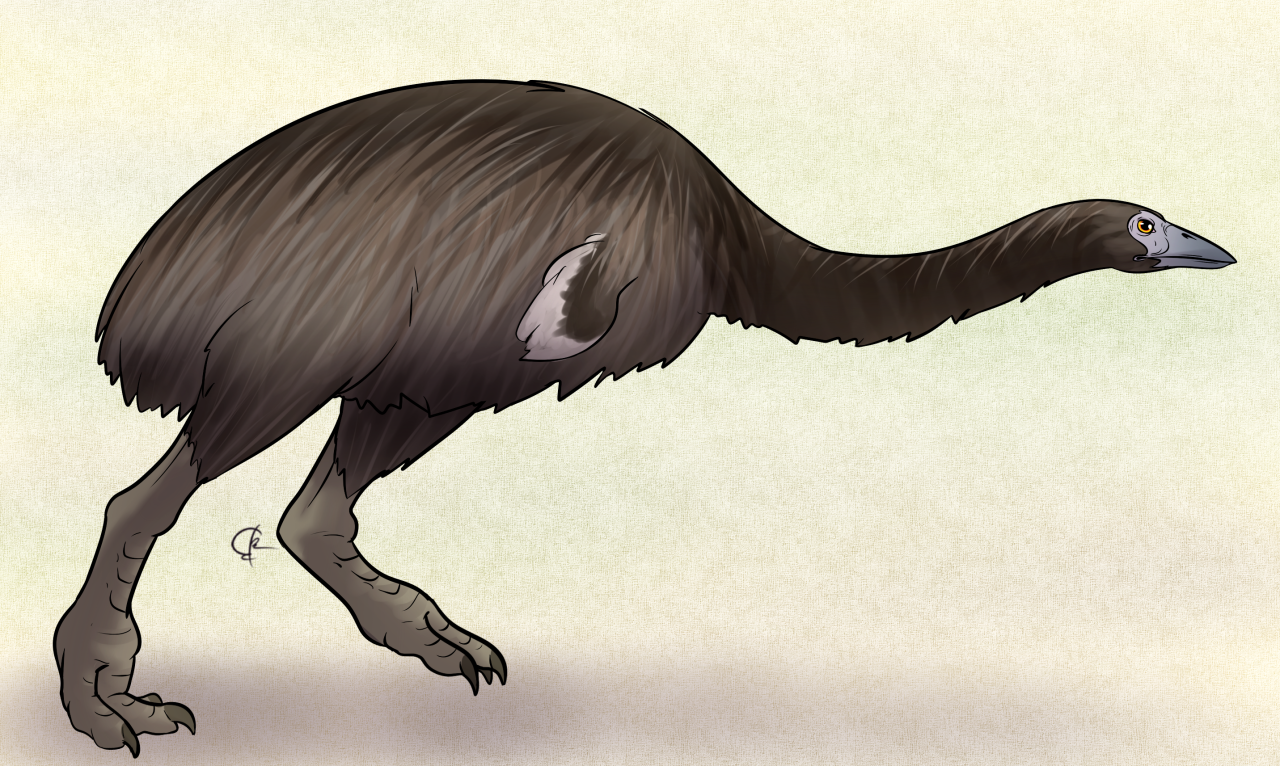Aepyornis

By Scott Reid on @drawingwithdinosaurs
Name: Aepyornis
Status: Extinct
First Described: 1851
Described By: I. Geoffroy Saint-Hilaire
Classification: Dinosauria, Theropoda, Neotheropoda, Averostra, Tetanurae, Orionides, Avetheropoda, Coelurosauria, Tyrannoraptora, Maniraptoriformes, Maniraptora, Pennaraptora, Paraves, Eumaniraptora, Averaptora, Avialae, Euavialae, Avebrevicauda, Pygostylia, Ornithothoraces, Euornithes, Ornithuromorpha, Ornithurae, Neornithes, Palaeognathae, Notopalaeognathae, Novaeratitae, Apterygiformes + Aepyornithihformes Clade, Aepyornithiformes, Aepyornithidae
Referred Species: A. gracilis, A. hildebrandti, A. maximus, A. medius
And now on to the Elephant Birds! Aepyornis is the larger of the two genera of elephant birds, and the largest bird in the world until it went extinct about 1,000 years ago. These birds lived entirely in Madagascar, and lived there throughout the Holocene, so from 12,000 years ago to 1,000 years ago. Genetically - so with analyses of ancient DNA still present in Aepyornis remains - it is most closely related to modern Kiwi, indicating that a flighted ancestor of both diverged into a group that reached Madagascar, and another group that reached New Zealand, and both evolved flightlessness independently. It is thought to have been about 3 meters tall and weighing up to 400 kilograms. Its eggs had circumferences of up to over 1 meter - 160 times greater than chicken eggs.

By Matt Martyniuk, CC BY-SA 3.0
Aepyornis (purple) is shown here alongside other dinosaurs such as the modern Ostrich (red), which it is significantly larger than, the extinct raptor Utahraptor (green) which it is about the same size as, the extinct raptor Deinonychus (blue) which it is much much larger than, and the chickenparrot Gigantoraptor (orange) which is significantly larger than the Elephant Bird. Subfossils of this genus are found throughout Madagascar, though it is uncertain whether or not they lived in rainforests (like a scaled-up cassowary) or in grasslands (like a scaled up rhea), though they had small wings and as such probably weren’t fast runners, instead were slow moving birds with strong, stout legs. Eggs are occasionally found in the fossil record, and they’re the largest bird eggs known. They seem to have mainly eaten coastal wetland plants, though very little is known about their life habits.

By José Carlos Cortés on @quetzalcuetzpalin-art
Aepyornis probably died out due to human activity. They were widespread on the island, but they began to be more and more restricted in range during the time of human settlement. Evidence exists that human families would use their large eggs for food. It is difficult to tell exactly when they went extinct, but it seems to have been about 1000 years ago. They may have also caught diseases from the domesticated birds humans brought with them for food.
Sources:
http://fossilworks.org/?a=taxonInfo&taxon_no=39293
https://en.wikipedia.org/wiki/Aepyornis
Mayr, G. 2017. Avian Evolution: The Fossil Record of Birds and its Paleobiological Significance. Topics in Paleobiology, Wiley Blackwell. West Sussex.


























